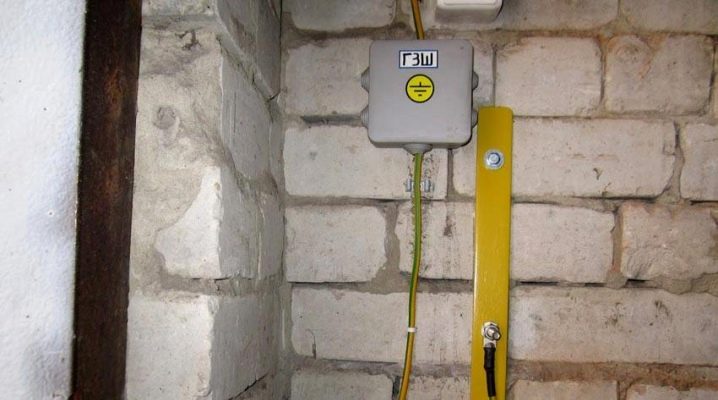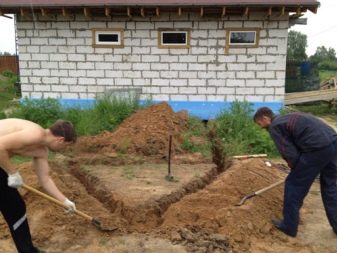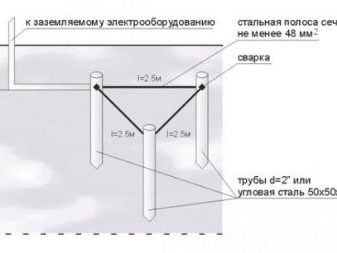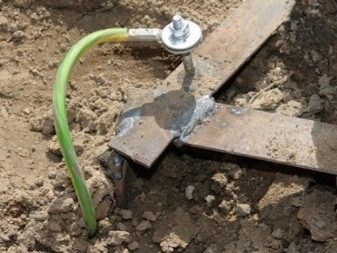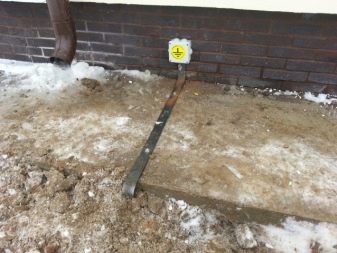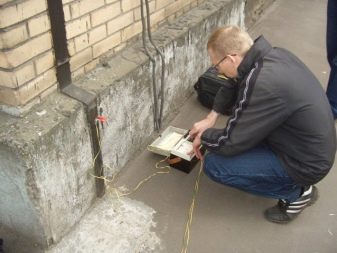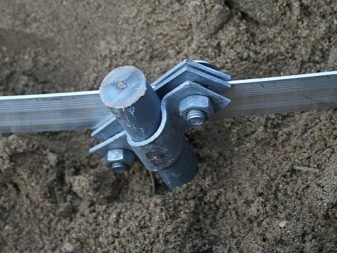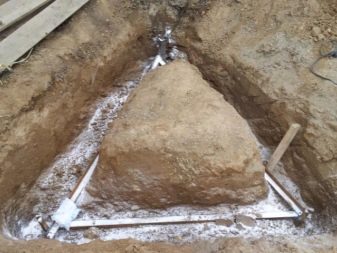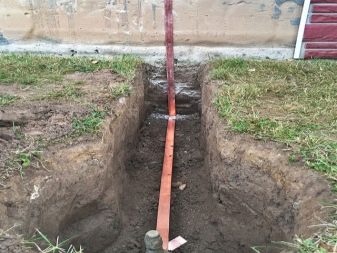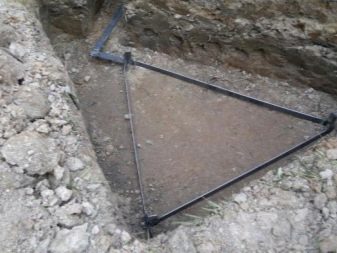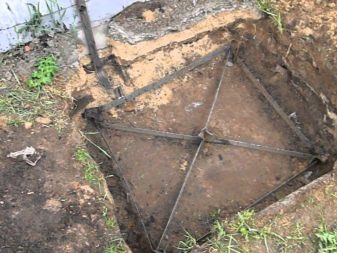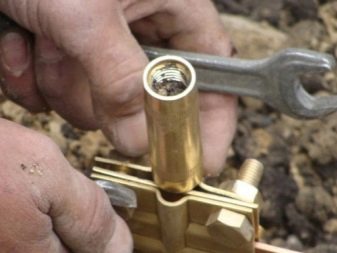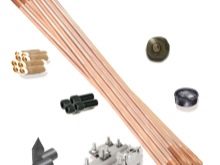How to ground the gas boiler in a private house?
The issue of heating in a private house is quickly resolved by installing gas equipment. Its main part is a gas boiler, designed to warm up the coolant (usually water) using natural gas. By installing such a device, the owners of the house form an independent heating system that allows you to regulate heat in certain parts of the building. However, operation cannot be started without prior grounding - the installation of a connecting element between the ground and the appliance. Electric current through the grounding conductor will be directed to the ground, which neutralizes it without any problems.
What is grounding for?
Without a procedure such as grounding, it is not safe to use the gas boiler.The fact is that such devices, as a rule, are made of metal or have metal parts, for example, a casing, and this material is characterized by the appearance of static electricity. Emerging charges form an electric field that affects the electronic system of the boiler, which is responsible for control. In other words, in the absence of grounding, the activity of this component may be disrupted. Either the entire system or its individual elements, such as a board, will fail.
It should also be added that this procedure relieves the inhabitants of the house from the influence of statistical electricity. Although charges in most cases are not dangerous, they are very painful, therefore it is much more pleasant to be protected from electric current. In addition, it will help prevent breakdowns: problems with the board may occur due to power surges.
Finally, and not least, ignoring the boiler's grounding may cause it to simply explode.
An electric field often leads to spontaneous combustion of objects that function due to gas and under pressure, and, as a result, an explosion occurs.Interested in an ungrounded boiler and representatives of the gas service and, quite possibly, will write out fines.
Grounding selection
In general, there are two ways to conduct a gas boiler earthing in a private house, which are carried out depending on the choice of grounding. The earthing switch is a component of the grounding structure, which is an electrode that directly connects to the ground. In the first case - natural grounding - the already assembled structures are used, which are in contact with the ground. For example, it may be a fragment of the basement, pipeline and other communications. They are made of metal or reinforced concrete elements. However, when grounding a gas boiler, it is necessary to observe at least two joints with separate fragments of a grounding conductor, and it is prohibited to use sewage, gas and heating pipes for this purpose. Therefore, most often, preference is given to artificial grounding.
In the second case, steel pipes, angles, strips or other parts specially designed for this purpose are used. They must be treated in a special way: coated with copper or zinc.These contour elements must be buried vertically in the ground (this way the system will be able to function even when the ground is frozen during the cold season) and connected to the boiler in at least two places.
Other details of the contour, more precisely, the material from which they are made, will be selected depending on the level of resistance. This applies to tires and pipes, which will become electrodes. The tire takes the form of a strip, it is made of copper or steel (aluminum is strictly prohibited). It is important to know that all elements must have anti-corrosion protection: you can use galvanized, copper-coated or conventional anti-corrosion paste. Pins and tire will be interconnected by spot welding.
In addition to the elements of the grounding itself, it is important to pay attention to the available land. If it is silt, then the resistance of the circuit elements can not be greater than 10 ohms, if it is sand, then the value increases to 50 ohms. Worst of all, meet the requirements of the installation of a grounding circuit stone and rock soil.
If we talk about other parameters, the wire, which should go from the shield of the gas boiler to the contour on the street, must have a certain cross section.If it is made of copper, then the figure is 10 millimeters square, if aluminum is 16 millimeters square, and steel is 75 millimeters square.
Grounding Instructions
Grounding gas boiler in a private house is carried out according to a specific instruction. It all starts with the fact that a contour layout is dug out on the ground. The chosen place must be at a certain distance from the foundation of the house: not less than 1 meter, but not more than 5 meters. After the grounding, it will be impossible to erect any buildings on this site, plant flowers and plants, and in general it is absolutely not desirable for a person to be there. It is best to fence all with some kind of fence (including the bus leading to the house) and decorate the place with some static object that does not require special attention.
Usually, the contour looks like an equilateral triangle, the sides of which are approximately 2.5 meters. The depth of the groove should be 50 centimeters, and the width vary from 35 to 40 centimeters. Then, in the corners, recesses are formed into which steel corners or pipes are driven into a depth of 2-3 meters. The parameters of the grounding are as follows: length is approximately 3 meters, and the surface area is 60 to 70 millimeters.They need to be hammered in such a way that over the bottom of the groove “protrudes” about 15 centimeters. In the next step, these corners are connected to the tire, that is, to the steel strip. Its dimensions are 40 to 4 millimeters. This strip will become a horizontal grounding.
This is usually done by welding. A trench is pulled out, which goes to the basement of the house where the boiler is located. Along it goes the same horizontal strip, which is to “rise” above the ground about half a meter in the place where it approaches the house. On the side where the building is located, it will be necessary to attach a pin and cover it with a protective box, preferably from PVC.
Finally, both the trench and the groove are well camouflaged by the ground - almost no element should remain on the surface, just a piece of steel strip with a pin. This territory can even be fenced. The stud is firmly connected to the wires running from the shield, and the steel strip is ideally welded to the basement fragment of the house. The resistance value of a standard gas boiler earthing system does not exceed 4 ohm, which fully satisfies official requirements.
To correctly connect the created circuit to the power shield, you can use the grounding conductor. On the one hand, it is fixed at the basement level of the building, and on the other, it is attached to the protective zero of the shield.
In the case when there is not enough space on the territory to form a triangular contour, one can limit oneself to a linear structure. For her to dig a four-meter trench and fill it with three electrodes, which will be located at a depth of 1.5 to 2.5 meters. Between them, the distance will be about 2 meters. In theory, the contour can be made both in the form of a square, and a trapezium, and a polygon, the main thing is to preserve the general connection scheme.
It is worth knowing that a ready-made kit for making a ground loop is commercially available. It consists of copper-coated steel rods, one edge of which is sharpened so that it can easily enter the ground. There is also a tool in the kit that will have to process the elements to protect it from corrosion. Finally, in the presence of connecting elements, made of brass.
However, if you have free time, certain skills and knowledge, this system can be organized by yourself.Of course, it will take more time, but if you make all the details yourself, you can save a lot. In any case, the result is important - the check of the circuit by the gas service must pass without complaints. During this procedure, the soil resistance coefficient and its conductivity will be investigated. Specific requirements will depend on the EMP, according to which the verification is carried out.
After the visit of specialists, a package of documents will be issued, including including a technical report on testing, several protocols, a list of documentation and other important data. With this act it is already possible to apply for connecting the house to the main gas pipeline. The total cost of this procedure will depend on the type of earth, on the materials from which the electrodes are made, on the material of the wires and their thickness, and finally on the type of grounding: natural or artificial.
Installation of grounding for a gas boiler, see the following video.
